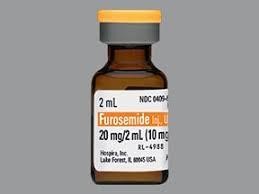A nurse is caring for a client who has a prescription for warfarin.
Which of the following laboratory tests should the nurse monitor?
Triiodothyronine
Blood urea nitrogen
Arterial blood gases
Prothrombin time
The Correct Answer is D
d. Prothrombin time.
Explanation:
Warfarin is an anticoagulant medication that works by inhibiting the synthesis of vitamin K-dependent clotting factors in the liver. Therefore, it is important to monitor the client's clotting ability to ensure that the medication is working properly and not causing any adverse effects.
The laboratory test that is used to monitor warfarin therapy is the prothrombin time (PT), which measures the time it takes for the blood to clot. The nurse should monitor the client's PT regularly and adjust the dosage of warfarin as necessary to maintain the therapeutic range.
Option a (Triiodothyronine) is a thyroid hormone and is not directly related to warfarin therapy.
Option b (Blood urea nitrogen) is a measure of kidney function and is also not directly related to warfarin therapy.
Option c (Arterial blood gases) is a measure of oxygen and carbon dioxide levels in the blood and is not related to warfarin therapy.

Nursing Test Bank
Naxlex Comprehensive Predictor Exams
Related Questions
Correct Answer is A
Explanation
Choice A Reason:
Encouraging assertiveness helps the client build self-confidence and the ability to express their needs and preferences. Individuals with dependent personality disorder often struggle with making decisions and being overly reliant on others, so promoting assertiveness can be an important part of their therapeutic process.
Choice B Reason:
Assuming responsibility for making the client's decisions is not appropriate because it further reinforces dependency, which is not a healthy outcome for individuals with dependent personality disorder.
Choice C Reason:
Maintaining a verbal no-harm contract is a safety measure for clients at risk of self-harm but is not specific to dependent personality disorder and may not be the primary focus of discharge teaching for this condition.
Choice D Reason:
Limiting the client's social interactions is not advisable. Encouraging social interactions and support can be beneficial for individuals with dependent personality disorder, as long as they are not excessively reliant on others for decision-making and functioning.
Correct Answer is B
Explanation
Choice A Reason:
Decreased BUN (blood urea nitrogen) level is incorrect. While furosemide can lead to decreased BUN levels, it is not the primary indicator of its effectiveness. BUN levels can be influenced by various factors, including hydration status and kidney function.
Choice B Reason:
Increased urinary output is correct. Furosemide is a diuretic medication often prescribed to clients with heart failure to help manage fluid retention. One of the primary therapeutic effects of furosemide is increased urinary output, which indicates that the medication is effectively removing excess fluid from the body.
Choice C Reason:
Decreased hemoglobin level is incorrect. Furosemide is not directly associated with changes in hemoglobin levels. Hemoglobin levels reflect the oxygen-carrying capacity of the blood and are typically not affected by diuretic therapy.
Choice D Reason:
Increased weight of 0.91 kg (2 lb.) is incorrect. An increase in weight is not indicative of the medication's effectiveness. In fact, weight gain could be a sign of fluid retention and heart failure exacerbation, which would suggest that the medication may not be working optimally.

Whether you are a student looking to ace your exams or a practicing nurse seeking to enhance your expertise , our nursing education contents will empower you with the confidence and competence to make a difference in the lives of patients and become a respected leader in the healthcare field.
Visit Naxlex, invest in your future and unlock endless possibilities with our unparalleled nursing education contents today
Report Wrong Answer on the Current Question
Do you disagree with the answer? If yes, what is your expected answer? Explain.
Kindly be descriptive with the issue you are facing.
